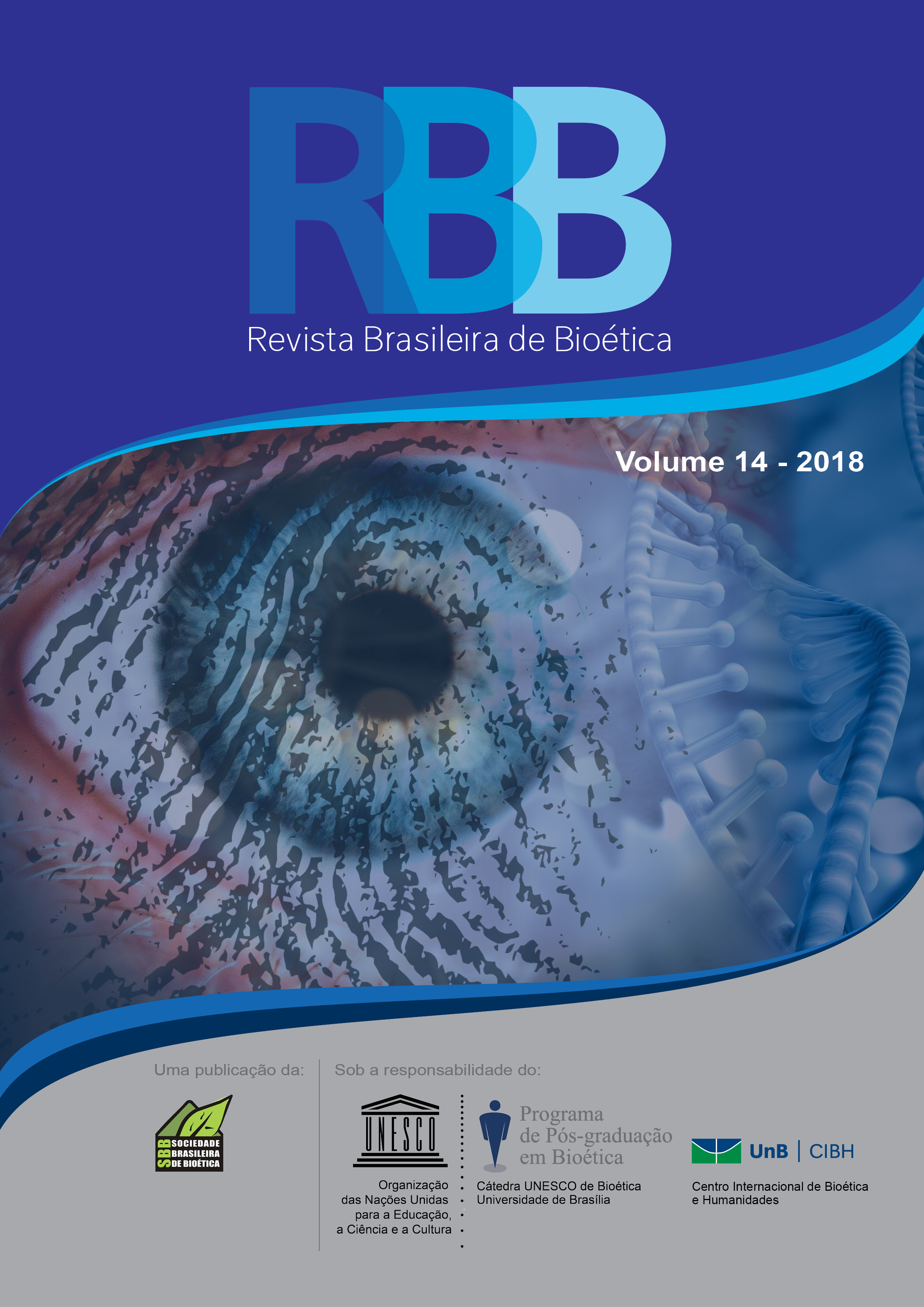Severity classification system: abolitionist analysis of the categorization of the animal-thing
DOI:
https://doi.org/10.26512/rbb.v14i0.12439Keywords:
severity classification system, abolitionism, animal ethics, animal experimentation, 3Rs.Abstract
This article aims to analyze the severity classification systems in animal experimentation, not only in relation to the realization of the principles of 3Rs, but especially from an abolitionist perspective. Classification systems have emerged to implement the principles of 3Rs and, therefore, aim at reducing the suffering of animals in scientific research. From the abolitionist point of view, however, such task is profoundly impaired from the moment the animal is conceived as property. What emerges from this context is an asymmetrical relationship of domination between owner and property, where the balance of interests defended by the principle of equal consideration of interests never happen. For this scenario to change, it is imperative to construct a paradigm that assumes the animal as a subject, not a thing.
Downloads
References
Baeder FM, Padovani MCRL, Moreno DCA, Delfino CS. Percepção histórica da bioética na pesquisa com animais: possibilidades. Revista Bioethikos 2012; 6(3): 312- 320.
Bateson, P. Assessment of pain in animals. Animal Behaviour 1991; 42(5): 827-839.
Baumans V, Clausing P, Hubrecht R, Reber A, Vitale A, Wyffwls E, Gyger, M. FELA-SA Working group standardization of enrichment: working group report. London, UK: Laboratory Animals Ltd; 2006.
Bekoff M. Animal emotions: exploring passionate natures current interdisciplinary research provides compelling evidence that many experience such emotions as joy, fear, love, despair, and grief ”“ we are not alone. BioScience 2000; 50(10): 861-870.
Bisgould L. Power and irony: one tortured cat and many twisted angles to our moral schizophrenia about animals. In: Castricano J (eds). Animal subjects: an ethical reader in a posthuman world. Ontario, Canada: Wilfrid Laurier University Press; 2008: 259-269.
Brasil. Ministério da Ciência, Tecnologia e Inovação, Conselho Nacional de Controle da Experimentação Animal. Resolução normativa no 30, de 02/02/2016. Baixa a Diretriz Brasileira para o Cuidado e a Utilização de Animais em Atividades de Ensino ou de Pesquisa Científica ”“ DBCA. Brasília: Diário Oficial da União; 02/02/2016.
Brasil. Presidência da República, Casa Civil, Subchefia para Assuntos Jurídicos. Lei no 11.794, de 08/10/2008. Regulamenta o inciso VII do § 1o do art. 225 da Constituição Federal, estabelecendo procedimentos para o uso científico de animais; revoga a Lei no 6.638, de 8 de maio de 1979 e dá outras providências. Brasília: Diário Oficial da União; 08/10/2008.
CONCEA. Guia brasileiro de produção, manutenção ou utilização de animais em atividades de ensino e pesquisa científica 2015.
Griffin G, Dansereau M, Gauthier C. Categories of invasiveness: a precautionary approach. Alternatives to Animal Testing and Experimentation 2007; 14: 715-720.
Felipe, ST. Antropocentrismo, senciocentrismo e biocentrismo: perspectivas éticas abolicionistas, bem-estaristas e conservadoras e o estatuto dos animais não-humanos. Páginas de Filosofia 2009; 1(1): 2-30.
Fenwick N, Ormandy E, Gauthier C, Griffin G. Classifying the severity of scientific animal use: a review of international systems. Animal Welfare 2011; 20(2): 281-301.
Ferdowsian HR, Gluck JP. The ethical challenges of animal research. Cambridge Quarterly of Healhcare Ethics 2015; 24: 391-406.
Fischer ML, Librelato RF,Cordeiro AL, Adami ER. A percepção da dor como pará‚metro de status moral em animais não humanos. Revista Conexão Ciência 2016; 11(2): 31-41.
14. Fischer ML, Molinari RB. Gary Francione e abolicionismo animal. In: Oliveira J (eds). Filosofia Animal: Humano, animal, animalidade. Curitiba: PUCPRess; 2016: 351- 381.
Fischer ML, Santos JZ. Bem-estar em invertebrados: um pará‚metro ético de responsabilidade científica e social da pesquisa? Revista latinoamericana de bioética 2017; 18(1): 18-35.
Fischer ML, Tamioso, PR. Perception and position of animals used in education and experimentation by students and teachers of different academic fields. Estudos de Biologia: Ambiente e Diversidade 2013; 35(84): 85-98.
Francione GL. Rain without thunder: the ideology of the animal rights movement. Philadelphia: Temple University Press; 1996.
Francione GL. Introdução aos direitos animais: seu filho ou o cachorro. Campinas: Editora Unicamp; 2015.
Francione GL, Garner R. The animal rights debate: abolition or regulation? New York: Columbia University Press; 2010.
Joy M. Por que amamos cachorros, comemos porcos e vestimos vacas: uma introdução ao carnismo. São Paulo: Editora Cultrix; 2014.
Kachanoski R. Enfoc: violência especista. Revista latino-americana de estudios críticos animales 2016; 3(1): 209-233.
Kelch T. A caminho de um status de não-propriedade para os animais. Revista Brasileira de Direito Animal 2012; 7(10): 63-117.
Mellor DJ, Reid CSW. Concepts of animal well-being and predicting the impact of procedures on experimental animals. In: Jenkin G, Mellor DJ, Baker RM (eds). Improving the well-being of animals in the research environment. AS, Australia: Glen Osmond; 1994: 03-18.
Oliveira EM, Goldim JR. Legislação de proteção animal para fins científicos e a não inclusão dos invertebrados ”“ análise bioética. Revista Bioética 2014; 22(1): 45-56.
Orlans FB. Animal pain scales in public policy. Alternatives to Laboratory Animals 1990; 18: 41-50.
Paixão RL. As comissões de ética no uso de animais. Revista CFMV 2004; 10(32): 13-20.
Petroianu A. Aspectos éticos na pesquisa em animais. Acta Cirúrgica Brasileira 1996; 11(3): 157-164.
Purves K. Global harmonization of pain and distress classification systems: current analysis and opportunity for change. Journal of applied animal welfare science 2010; 3(1): 49-61.
Regan T. Jaulas vazias: encarando o desafio dos direitos animais. Porto Alegre: Lugano; 2006.
Russell WMS, Burch RL. The principles of humane experimental technique. London: Methuen & Co Ltd; 1992.
Singer P. Libertação Animal. São Paulo: Wmf Martins Fontes; 2010.
Smith J, Jennings M. Categorising the severity of scientific procedures on animals. RSPCA Research Animals Department 2004.
Smyth DH. Alternatives to animal experiments. London: Scholar Press; 1978.
Tinoco IAP. Lei Arouca: avanço ou retrocesso? In: I Congresso Mundial de Bioética e Direito dos Animais. Salvador; 2008.
Tréz T. Experimentação animal: um obstáculo ao avanço científico. Porto Alegre: Tomo Editorial; 2015.
Trindade GG, Nunes LL. A questão do status moral e legal dos animais não-humanos sob o prisma da abordagem abolicionista de Gary L. Francione. Thaumazein 2011; 4(7): 58-72.
Williams VM, Mellor DJ, Marbrook J. Revision of a scale for assessing the severity of live animal manipulations. Alternatives to Animal Testing and Experimentation 2006; 23: 163-169.



